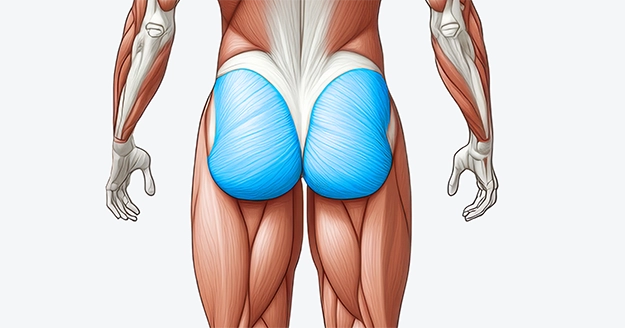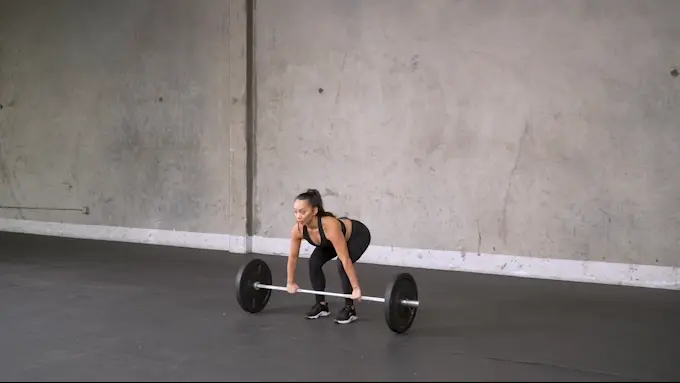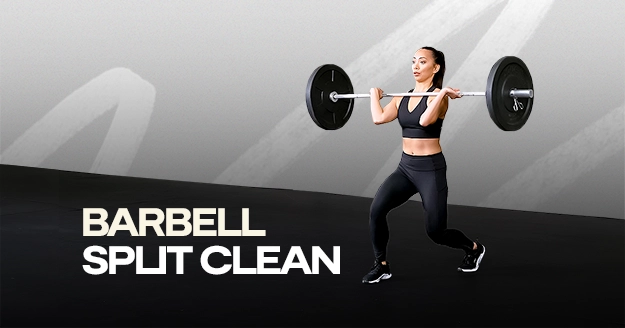Exercise Profile
Barbell Split Clean Overview
The Barbell Split Clean is an Olympic weightlifting movement that combines the power of the clean with a split stance, where the lifter rapidly drops into a split position after the pull. It focuses on building strength, speed, and coordination. Barbell split clean works legs, hips, and upper body muscles.
This clean exercise benefits individuals with mobility or flexibility issues that make the squat clean difficult because it permits a grab with less depth and a broader support base.
Incorporating the split power clean regularly can contribute to overall strength development, improve explosive power, and enhance stability and balance.

Barbell Split Clean Instructions
Step 1: Stand with your feet hip-width apart, squat, and grab the bar slightly wider than shoulder-width. Keep the bar close to your shins with your shoulders in front.
Step 2: Gently pull on the bar to activate the muscles. To eliminate any slack, slightly straighten your knees and retract your shoulder blades.
Step 3: Extend your knees and hips quickly. Push through the floor until the bar is at knee level, then drive your hips forward. The movement should be explosive, lifting you onto the balls of your feet.
Step 4: When the bar reaches hip level, use the momentum to shrug the bar, letting your elbows bend.
Step 5: Turn your hands so your arms are below the bar as it rises while simultaneously jumping into a split squat.
Step 6: Catch the bar in a split squat stance by racking it on your shoulders while keeping your upper arms parallel to the floor. Finish the rep by standing up, bringing your feet together one at a time.

Barbell Split Clean Tips
- Brace your core before the lift to maintain stability and transfer power efficiently through your body.
- As the bar travels upward with momentum, move quickly to drop into a split stance and catch the bar in the clean position.
- After catching the bar, bring your feet together one at a time to stand tall and complete the lift smoothly.
Barbell Split Clean Common Mistakes
- Incorrect Foot Placement: Placing the feet in the wrong position after the split (too far forward or backward) can cause difficulty in standing up and finishing the lift properly.
- Overreaching with the Arms: Trying to lift the bar too high with the arms instead of focusing on hip extension can lead to unnecessary tension and less control.
- Bar Moving Away from the Body: Allowing the bar to drift away from your body during the pull can lead to inefficient lifting and reduce control.
Frequently Asked Questions
Why should I utilize a split stance rather than a squat position?
The split stance provides more stability and faster transitions, making it easier for those with mobility issues, and reduces the catch range compared to the squat clean.
Does the split clean require flexibility on my part?
While flexibility in the ankles, hips, and shoulders can help, the split clean can be more forgiving than the squat clean, especially for those who may have limited mobility or struggle with depth in the squat, targeting key clean muscles worked.
Is the split clean good for beginners?
The split clean can be easier for some beginners than the squat clean, as it requires less depth in the catch and offers a more stable position. However, it still demands good timing, coordination, and explosive power.
Post your post-workout selfies in IG and tag @trainestapp, #trainest, or DM them to us to get a shoutout on Trainest Stories!



